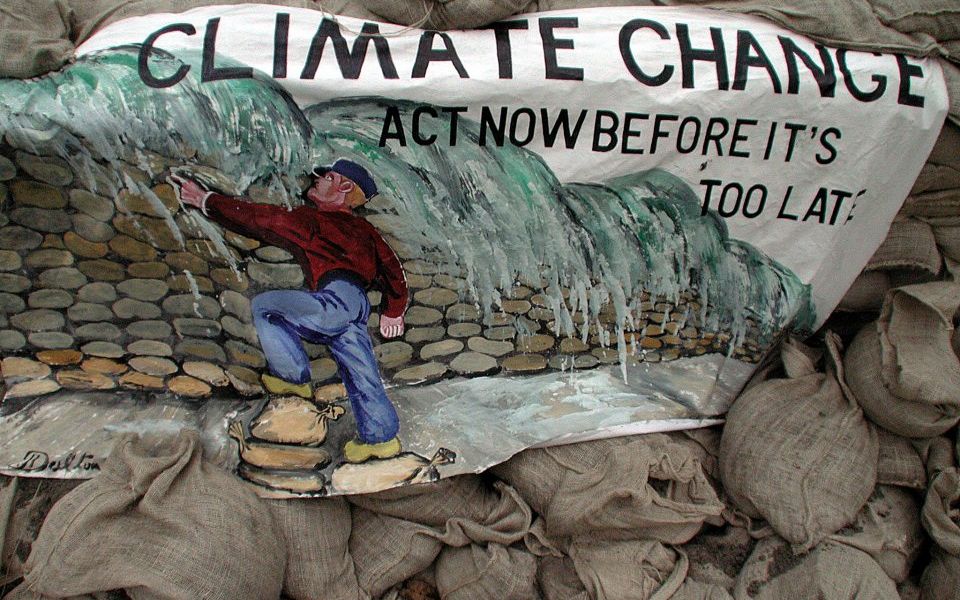
It’s getting hot out there, and investors need to protect themselves

In a previous incarnation, I was a theoretical astrophysicist. In that role, I worked on a team that tried to parse how much of global warming could be attributed to the sun and how much to human causes.
As someone who worked directly with climate change data, I can assure you: Climate change is real. And even though I have been out of that business for about 20 years now, every year I see more evidence piling up.
Average Global Temperature Anomalies since 1880

Source: National Aeronautics and Space Administration (NASA)
Independent measurements by NASA, US National Oceanic and Atmospheric Administration (NOAA), the Met Office, and the World Meteorological Organization (WMO) all confirm that 2017 was the third hottest year on record, trailing only 2015 and 2016, when El Niño led to a cyclical warming of the planet. In fact, 2017 had no El Niño effect but was significantly warmer than 1998, when a strong El Niño contributed to an extraordinarily hot year.
If annual global temperatures are corrected for the cyclical influence of El Niño and La Niña, 2017 was the hottest year on record. And hotter temperatures mean more energy in the atmosphere and that fuels more extreme weather phenomena.
This, in turn, has an increasing impact on investors. Munich Re recently published their estimates for losses caused by natural catastrophes in 2017. Total losses amounted to $330 billion, the second highest annual total after 2011, when the T�?huko earthquake and tsunami in Japan exacted an enormous $354-billion toll.
Hurricanes Harvey, Maria, and Irma contributed to the costliest hurricane season in the US ever last year, with $211 billion in losses — and Americans were lucky that Hurricane Irma dealt Florida only a glancing blow. Overall, insured losses amounted to $132 billion and many catastrophe (cat) bond funds suffered their worst years ever.
Performance of Select Catastrophe Bond Funds

Source: Bloomberg, Fidante Capital
Investors and pension-holders need to take climate change into account — not just when considering investing in insurance-linked assets, but also when investing in other areas:
- Oceanfront property is coming under graver and graver threat from rising sea levels, tropical storms, and hurricanes. This, in turn, affects property valuations and creates higher demand for inland properties.
- The insurance industry is finding it increasingly difficult to generate profits from flood insurance and other weather-related insurance policies. The losses from weather-related catastrophes are climbing faster than premiums can be raised. As a result, flood insurance and related products become loss makers.
- Food supply chains are vulnerable, as well. Asda, for example, has identified that 95 percent of its fresh produce is at risk from climate change. This potentially affects all levels, from farmers to restaurants, who will need to ensure they can adapt.
Environmental, social, and governance (ESG) investing is no panacea for climate change because the damage to a company’s bottom line materialises whether the firm has a high ESG score or not. Analysts and investors need to address the risks of climate change with models based on traditional financial statement analysis.
Given insurance industry losses in 2017, such efforts are growing ever more critical to create added value.
—
Joachim Klement, CFA, is Head of Investment Research at Fidante Capital and a trustee of the CFA Institute Research Foundation. Previously, he was CIO at Wellershoff & Partners Ltd., and before that, head of the UBS Wealth Management Strategic Research team and head of equity strategy for UBS Wealth Management. Klement studied mathematics and physics at the Swiss Federal Institute of Technology (ETH), Zurich, Switzerland and Madrid, Spain, and graduated with a master’s degree in mathematics. In addition, he holds a master’s degree in economics and finance.
